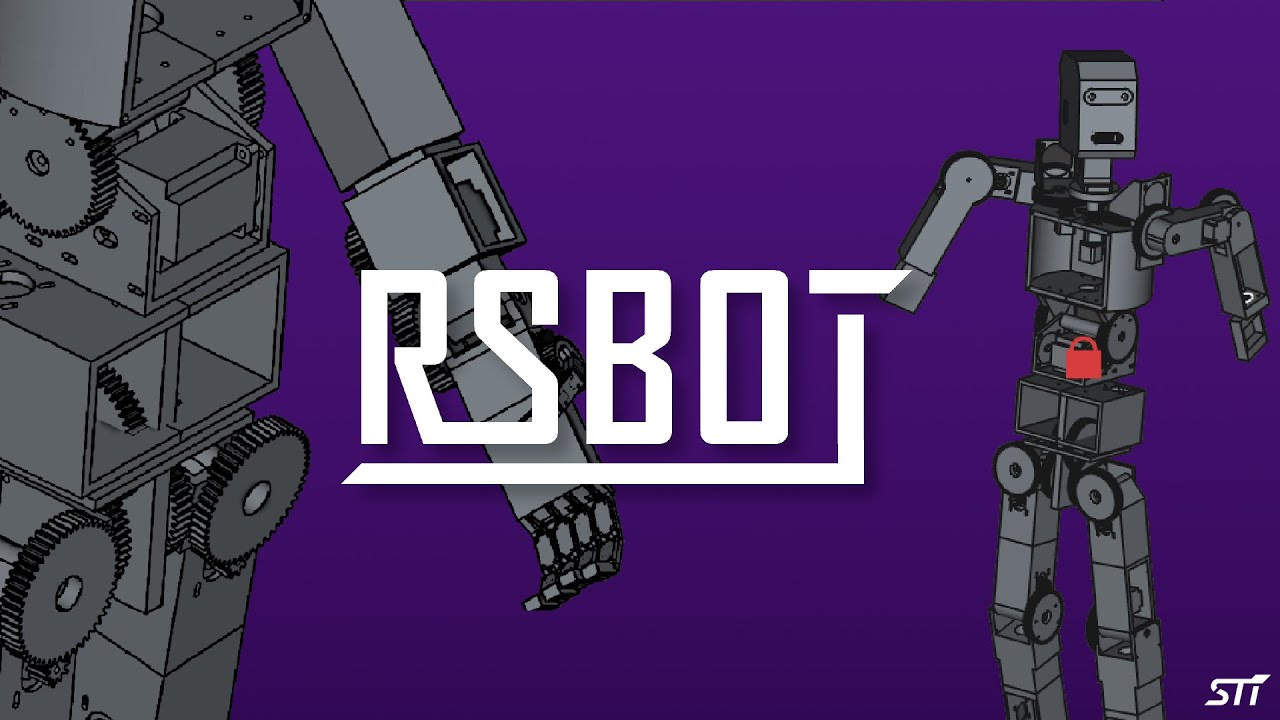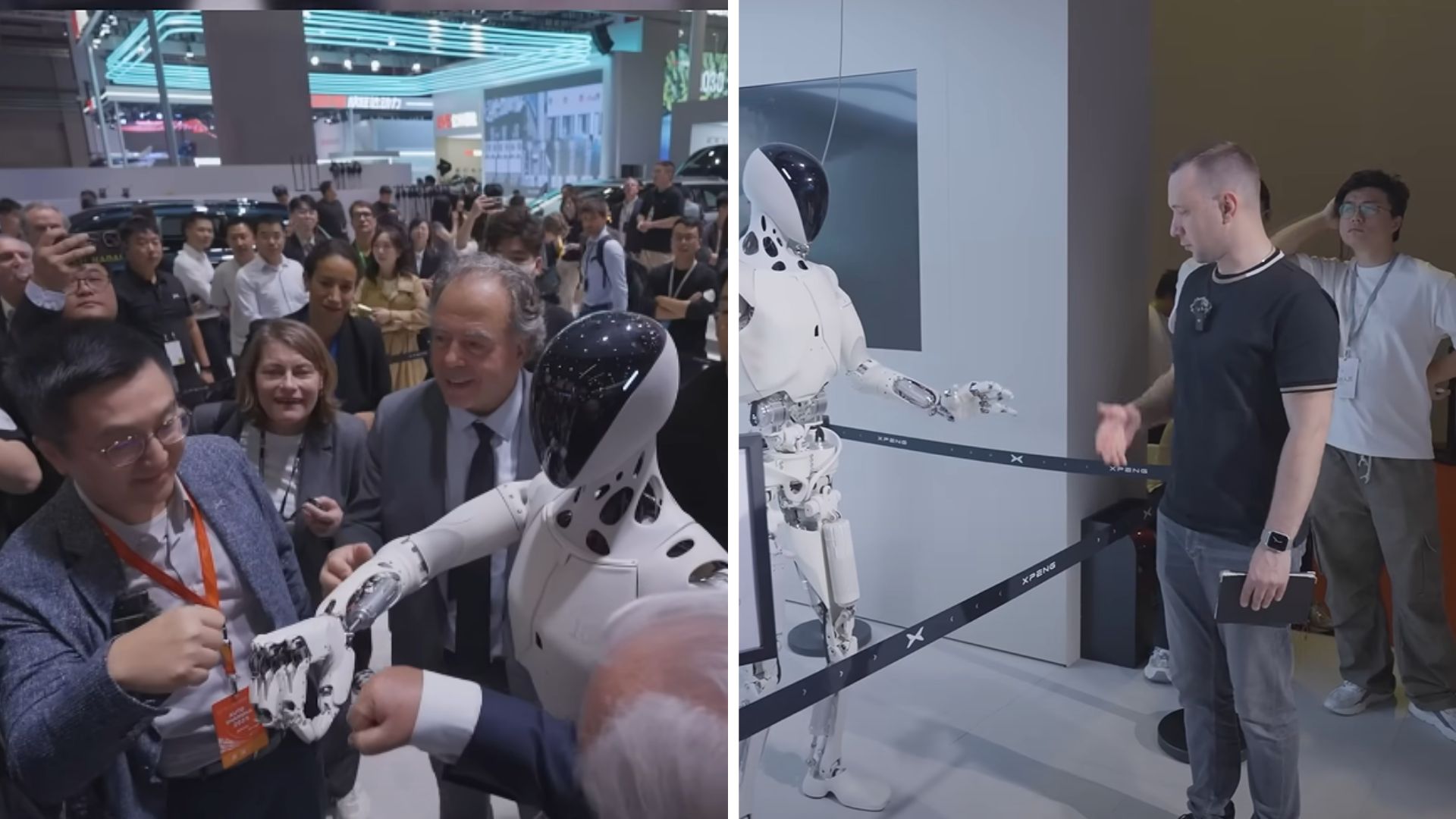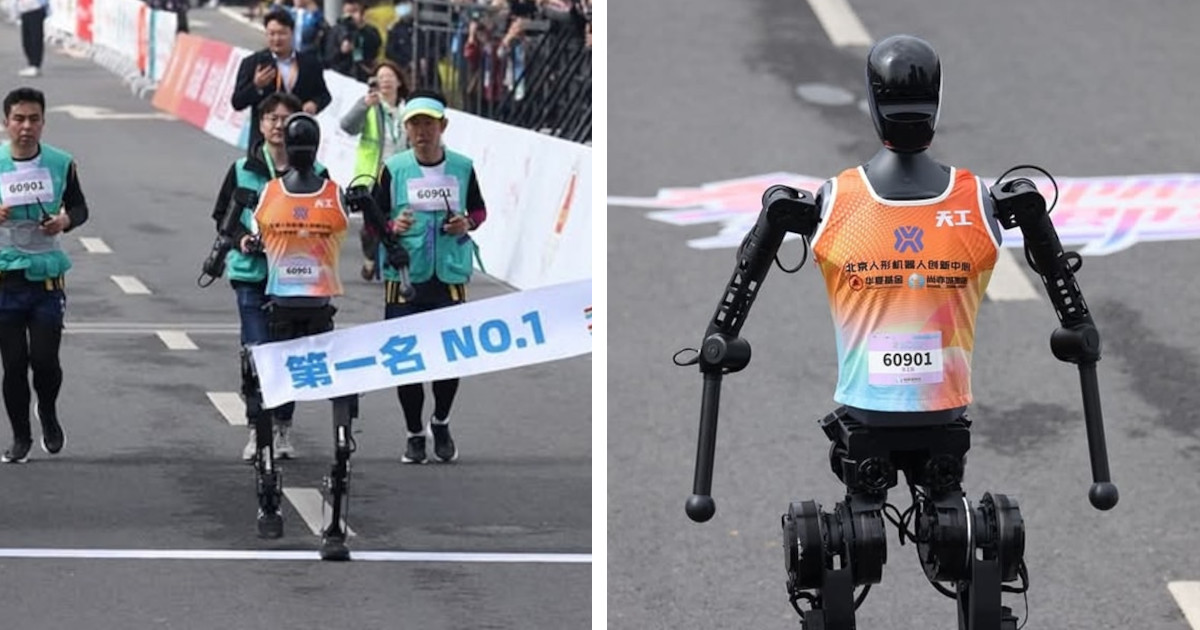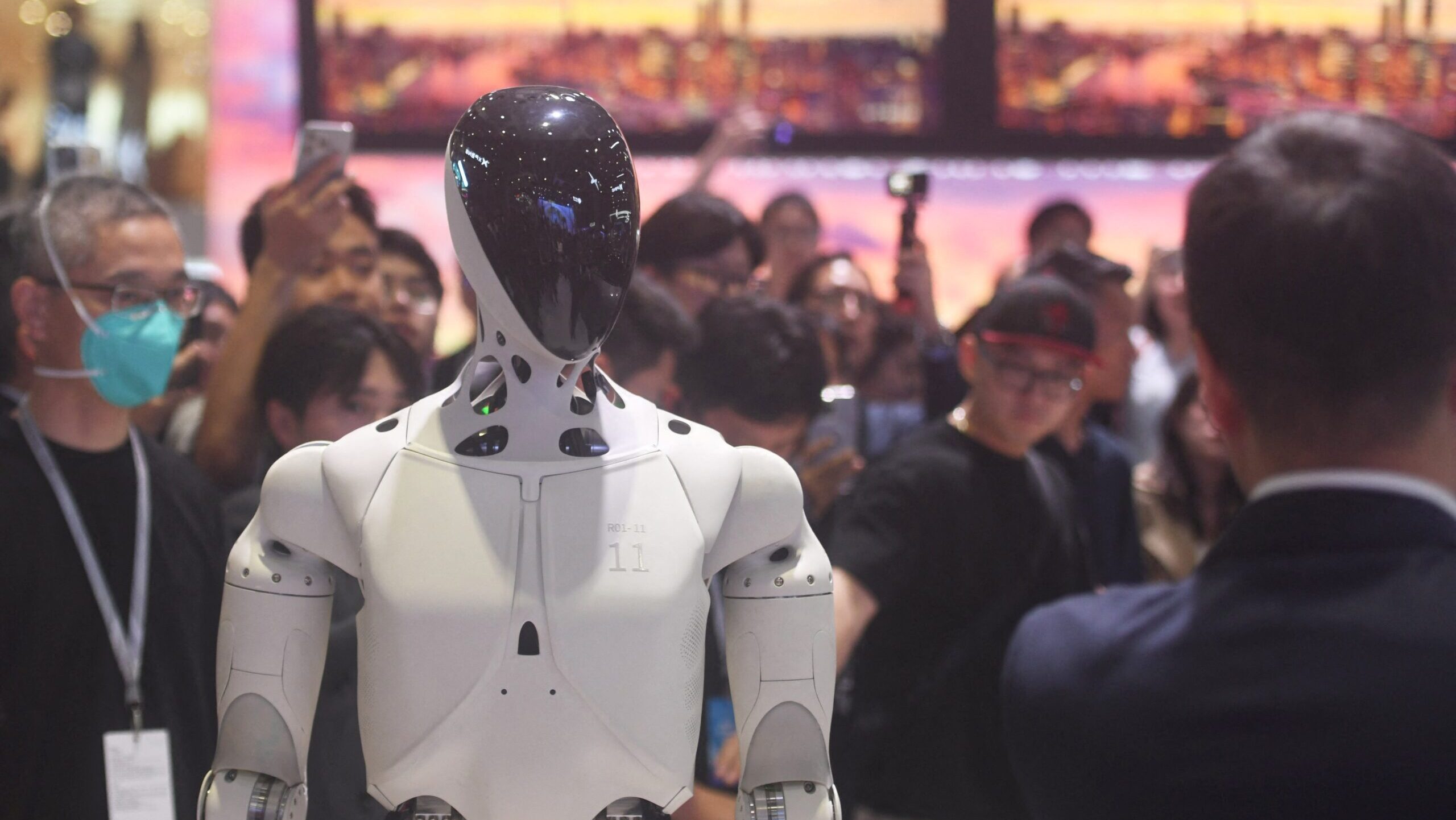Beyond the Print Bed: Ensuring Your RSBOT’s Longevity with Fix4Bot.com
The hum of the 3D printer ceases, and there it is – RSBOT, your very own miniature humanoid marvel, fresh off the build plate. The brainchild of innovative design and community spirit, RSBOT, with its readily available free files and budget-friendly PCTG filament construction, democratizes the world of robotics. It invites enthusiasts, hobbyists, and budding engineers to step into a realm previously confined to labs and corporations. The allure of building your own functional robot, capable of movement and (with further integration) potentially even more complex actions, is undeniably captivating. You’ve poured time, filament, and perhaps a bit of nervous anticipation into bringing RSBOT to life, and the initial thrill of seeing it move, however tentatively, is immensely rewarding.
However, the journey of robotics, especially within the accessible DIY domain, is rarely without its bumps in the robotic road. Just as any mechanical or electronic creation – from a simple RC car to a sophisticated drone – robots are susceptible to wear, tear, and the occasional operational hiccup. RSBOT, despite its ingenious simplicity and robust PCTG construction, is no exception. The very nature of its 3D-printed articulated structure, while facilitating ease of assembly, also introduces potential points of vulnerability. Joints can wear, motors can falter, electronics can short, and even the robust PCTG, under stress or impact, can succumb to damage.
This is where the inevitable question arises for every RSBOT builder and enthusiast: What happens when things go wrong? When the smooth gait falters, a limb becomes unresponsive, or the once-bright LEDs flicker and die? The initial excitement can quickly give way to frustration and a daunting sense of being adrift in the realm of robotic repair. Troubleshooting complex systems, even seemingly simple robots like RSBOT, can be a labyrinthine process, demanding a blend of technical knowledge, diagnostic acumen, and specialized tools. For many RSBOT enthusiasts, the thought of disassembling their creation, hunting down obscure faults, and then attempting repairs can feel overwhelming, potentially relegating their once-prized robot to a shelf of forgotten projects.
But fear not, fellow roboticists! Because just as the open-source ethos of RSBOT empowers creation, a parallel support ecosystem is essential to ensure the longevity and continued enjoyment of your robotic companion. Enter Fix4Bot.com – the dedicated diagnostic and repair service specifically tailored for robots like RSBOT and the broader world of DIY and enthusiast robotics. Fix4Bot.com isn’t just another general electronics repair shop; it’s a specialized hub staffed by robotic experts who understand the intricacies of articulated 3D-printed machines, the nuances of PCTG and other common robotic materials, and the specific electronic and mechanical challenges inherent in projects like RSBOT.
At Fix4Bot.com, we understand that your RSBOT is more than just a collection of plastic parts and wires. It’s a manifestation of your curiosity, your ingenuity, and your passion for the world of robotics. That’s why we’ve built a service dedicated to not just fixing your robot but also to empowering you to keep it running smoothly and evolving alongside your skills and interests. We recognize the unique landscape of DIY robotics, where accessibility and affordability are paramount, and we’ve structured our services to be both expert-driven and budget-conscious, aligning perfectly with the spirit of projects like RSBOT.
The Spectrum of Robotic Ailments: Understanding Potential RSBOT Damages
Before diving into the Fix4Bot.com solution, it’s crucial to appreciate the diverse range of potential damages that can befall your RSBOT. Robotic systems, by their nature, are inherently complex, integrating mechanical structures, electrical circuitry, and often, software-driven intelligence. This multifaceted nature means that problems can arise from a multitude of sources and manifest in various ways. For RSBOT, specifically, we can broadly categorize potential damages into several key areas:
1. Physical and Structural Damage: As a 3D-printed robot, RSBOT’s physical integrity is paramount. PCTG is a robust material, chosen for its balance of strength and printability, but it is not indestructible. Impacts, drops, or even repeated stress on certain components can lead to:
- Joint Breakage and Wear: RSBOT’s articulated joints, while ingeniously designed for ease of printing and assembly, are points of mechanical stress. Repeated movements, especially if the robot is subjected to load or strain beyond its design parameters, can lead to cracks, fractures, or wear in the joint components. Over time, even normal operation can cause friction and erosion of the PCTG at these articulation points, resulting in loose, wobbly, or unresponsive joints.
- Frame Stress and Fractures: While the overall frame of RSBOT is designed for structural integrity, specific areas, particularly around motor mounts or sensor attachment points, can experience concentrated stress. Accidental bumps or falls can lead to cracks or even complete fractures in the PCTG frame. These fractures can be subtle hairline cracks initially, but they can propagate and weaken the entire structure over time.
- Damage to 3D-Printed Parts: PCTG, while durable, is still susceptible to scratches, abrasions, and deformations, especially under heat or harsh chemical exposure. The surface finish of 3D-printed parts can also be vulnerable to damage. Layer separation, though less common with PCTG when printed correctly, can occur under stress or repeated flexing, weakening the structural integrity of a component.
2. Electrical System Failures: RSBOT, at its core, is an electromechanical system. The electrical components – motors, sensors, wiring, actuators, and any microcontrollers or driver boards – are crucial for its functionality. Electrical issues can be insidious, sometimes manifesting intermittently before escalating into complete failures:
- Motor Malfunctions: RSBOT relies on small motors to drive its joints and movements. These motors, while generally reliable, can fail due to various reasons – burnout from overcurrent, mechanical jamming within the motor gears, wear and tear on the motor brushes (in brushed motors), or damage to the motor windings. A failing motor can lead to jerky, weak, or completely unresponsive movements in the affected limb or joint.
- Wiring and Connection Problems: The intricate wiring that connects RSBOT’s components is vulnerable to damage. Wires can fray, break, or become disconnected due to repeated flexing at joints, accidental tugs, or poor initial soldering or crimping. Loose or broken connections can cause intermittent signals, power loss to components, or even short circuits, potentially damaging sensitive electronics.
- Sensor Failures: If RSBOT is equipped with sensors (though the basic model described is minimalistic), these sensors can malfunction. Optical sensors can be obscured by dust or physical damage, encoders can fail due to wear or electrical issues, and other specialized sensors can be susceptible to environmental factors or physical shocks. Sensor failures can lead to inaccurate readings, erratic robot behavior, or complete lack of sensor input.
- Power Supply Issues: Problems with the power source, whether batteries or an external power supply, can cripple RSBOT. Batteries can degrade over time, losing capacity or failing to deliver sufficient current. Voltage regulators or power distribution boards can malfunction, leading to undervoltage or overvoltage conditions, potentially damaging connected components.
3. Software and Firmware Glitches: While RSBOT, in its most basic form, might operate with relatively simple control systems, any level of sophistication or programmed behavior introduces the potential for software or firmware issues:
- Code Corruption or Bugs: If RSBOT is controlled by a microcontroller programmed with custom code, errors in the code (bugs) or corruption of the program memory can lead to unexpected behavior, erratic movements, or complete system freezes.
- Firmware Issues: Microcontrollers and driver boards often rely on firmware – low-level software programs that control their basic functions. Corrupted or outdated firmware can lead to malfunctions, incompatibility issues, or prevent the robot from operating correctly.
- Parameter Misconfigurations: Even without outright software bugs, incorrect configuration parameters within the control code or firmware can lead to problems. Motor speed settings, sensor calibration values, or joint angle limits that are incorrectly configured can result in jerky movements, inaccurate positioning, or even damage to the robot by exceeding its mechanical limitations.
Fix4Bot.com: Your Dedicated RSBOT Recovery Squad
Recognizing this spectrum of potential issues, Fix4Bot.com has established itself as the premier destination for diagnosing and repairing your RSBOT, ensuring that your 3D-printed creation remains a functional and enjoyable project for years to come. We are more than just a repair service; we are a team of robotic enthusiasts and expert technicians who understand the DIY robotics landscape intimately.
Diagnostic Prowess: Unraveling the Mystery of Robotic Malfunctions
The foundation of any successful repair is accurate diagnosis. At Fix4Bot.com, we employ a systematic and meticulous diagnostic process to pinpoint the root cause of your RSBOT’s woes. Our approach is multi-faceted, combining visual inspection, electronic testing, and functional analysis:
- Comprehensive Visual Inspection: The first step is always a thorough visual examination of RSBOT. Our technicians meticulously inspect the robot’s physical structure, looking for cracks, fractures, loose joints, frayed wires, and any signs of physical damage. We scrutinize the 3D-printed parts for layer separation, warping, or any signs of material degradation. Visual inspection can often reveal obvious physical damage or points of stress concentration.
- Rigorous Electrical Testing: For electrical issues, we utilize a range of diagnostic tools and techniques. Multimeters are essential for checking continuity, voltage levels, and current flow throughout the robot’s circuitry. Oscilloscopes allow us to analyze signal waveforms, identifying signal distortion, noise issues, or timing problems. We methodically trace circuits, testing each component and connection to isolate faulty parts or wiring problems.
- Functional Testing and Software Diagnostics: Beyond static testing, we also perform dynamic functional tests. We power up RSBOT and observe its behavior, paying close attention to movement patterns, sensor readings, and any error messages or unusual sounds. If RSBOT utilizes software or firmware, we employ diagnostic tools to analyze code execution, identify software bugs, and check for parameter misconfigurations. We can also utilize specialized software to monitor motor performance, sensor data streams, and overall system operation.
- Stress Testing and Load Analysis: For structural issues, we may perform controlled stress tests, carefully applying loads to joints and frame components to identify weak points or areas prone to failure. This helps us understand the stress distribution within the robot’s structure and identify potential design weaknesses that might contribute to recurring problems.
Our diagnostic process is not a quick fix; it’s a deep dive into the inner workings of your RSBOT, ensuring that we accurately identify the underlying problem, not just the symptoms. This meticulous approach minimizes the risk of misdiagnosis and ensures that our repairs are targeted and effective.
The Art of Robotic Restoration: Repairing Your RSBOT with Expertise
Once the diagnosis is complete, the repair process begins. At Fix4Bot.com, we are equipped to handle a wide spectrum of RSBOT damages, leveraging our expertise in 3D-printed robotics, material science, and electronics repair.
Reviving the Physical Form: Mending 3D-Printed Components
Physical damage to RSBOT’s 3D-printed parts is a common concern. Our repair arsenal includes:
- Precision 3D Printing of Replacement Parts: For broken or severely damaged 3D-printed components, we utilize high-precision 3D printers to fabricate exact replacements. We maintain a library of common RSBOT parts and can also recreate custom components based on the original design files or through reverse engineering damaged parts. We utilize PCTG filament, matching the original material specification for seamless integration and ensuring consistent performance. Our 3D printing capabilities allow us to quickly and efficiently produce high-quality replacement parts, minimizing downtime for your RSBOT.
- Advanced Bonding and Repair Techniques: For less severe cracks or fractures, we employ advanced bonding techniques specifically designed for PCTG and other 3D printing materials. We utilize specialized adhesives and bonding agents that create strong, durable, and often invisible repairs. These techniques are particularly effective for mending hairline cracks, reinforcing weakened areas, and reattaching broken fragments where complete replacement is not necessary.
- Reinforcement and Structural Enhancement: Beyond simple repairs, we can also implement reinforcement strategies to enhance the structural integrity of RSBOT. This might involve designing and 3D-printing reinforcement sleeves or braces to strengthen vulnerable joints or frame sections. We can also incorporate metal inserts or fasteners into 3D-printed parts to improve durability and resistance to stress. Our goal is not just to repair the immediate damage but also to prevent future recurrences by addressing potential design weaknesses and enhancing the overall robustness of your RSBOT.
- Surface Refinishing and Cosmetic Restoration: Beyond structural repairs, we also offer surface refinishing and cosmetic restoration services. We can smooth out rough surfaces, repair scratches and abrasions, and even repaint or recoat 3D-printed parts to restore their original aesthetic appeal. This attention to detail ensures that your RSBOT not only functions flawlessly but also looks its best.
Electrical Rejuvenation: Restoring Power and Functionality
Electrical issues can be particularly challenging to diagnose and repair, but our expertise in robotics electronics ensures that your RSBOT’s electrical system is brought back to life:
- Expert Wiring Repair and Replacement: We are adept at tracing and repairing damaged wiring. We meticulously repair frayed wires, replace broken connectors, and re-solder loose or faulty connections. Where necessary, we completely replace damaged wiring harnesses with high-quality replacements, ensuring reliable and robust electrical connections throughout RSBOT. We utilize professional-grade crimping and soldering tools to guarantee secure and long-lasting repairs.
- Component-Level Electronics Repair: We are not just board-swappers; we are skilled in component-level electronics repair. We can diagnose and replace individual electronic components – resistors, capacitors, transistors, integrated circuits, diodes – on circuit boards. This approach is often more cost-effective than replacing entire circuit boards and allows us to salvage valuable components wherever possible. We maintain a stock of common robotic electronic components and have access to a wide network of suppliers to source specialized parts as needed.
- Motor Servicing and Replacement: We offer comprehensive motor servicing and repair. For brushed motors, we can clean and lubricate commutator brushes, replace worn brushes, and repair minor mechanical issues. For brushless motors, we can diagnose and repair bearing problems, winding faults, and sensor failures. If a motor is beyond repair, we source and install compatible replacements, ensuring proper motor matching and performance.
- Sensor Calibration and Replacement: If RSBOT utilizes sensors, we offer sensor calibration and replacement services. We can recalibrate existing sensors to ensure accurate readings and diagnose and replace faulty sensors with compatible replacements. Proper sensor calibration is crucial for accurate robot operation and we ensure that all sensors are meticulously calibrated after repair or replacement.
- Power System Restoration: We diagnose and repair power supply issues, including battery problems, voltage regulator failures, and power distribution board malfunctions. We can test batteries for capacity and internal resistance, replace faulty voltage regulators, and repair or replace damaged power distribution circuits. Ensuring a stable and reliable power supply is fundamental to RSBOT’s proper operation.
Software and Firmware Revival: Re-programming for Optimal Performance
For RSBOT configurations involving software or firmware, we offer specialized support to address software-related malfunctions:
- Firmware Reflashing and Updates: We can re-flash firmware to microcontrollers and driver boards, resolving issues caused by corrupted firmware or outdated versions. We maintain a library of firmware images for common robotic platforms and can also source or create custom firmware as required. Firmware updates can sometimes resolve known bugs, improve performance, and add new features to your RSBOT.
- Code Debugging and Bug Fixes: If RSBOT is controlled by custom software, we offer code debugging services to identify and fix software bugs that may be causing malfunctions. Our team has expertise in common robotic programming languages and can analyze and debug code to ensure correct operation.
- Parameter Optimization and Performance Tuning: We can optimize control parameters within the software or firmware to improve RSBOT’s performance and behavior. Fine-tuning motor speed settings, sensor calibration values, and control algorithms can enhance responsiveness, accuracy, and overall efficiency. Optimal parameter settings are crucial for achieving smooth and predictable robot動作.
Proactive Care: Maintenance for Longevity, Powered by Fix4Bot.com
Beyond reactive repairs, Fix4Bot.com advocates for proactive maintenance as the key to extending the lifespan and maximizing the enjoyment of your RSBOT. We offer maintenance services and guidance to help you keep your robot in peak condition.
- Routine Check-ups and Inspections: We offer regular check-up services where our technicians conduct thorough inspections of your RSBOT, identifying potential issues before they escalate into major problems. These check-ups include visual inspections, joint lubrication, wiring checks, and basic functional tests. Routine check-ups can catch minor problems early, preventing costly repairs down the line.
- Preventive Maintenance Packages: We offer tailored preventive maintenance packages that include scheduled lubrication of joints, tightening of fasteners, cleaning of sensors and motors, and firmware updates. These packages are designed to minimize wear and tear, maintain optimal performance, and extend the lifespan of your RSBOT.
- Maintenance Guidance and DIY Support: We believe in empowering the DIY robotics community. We provide online resources, guides, and tutorials on basic RSBOT maintenance procedures. We also offer remote technical support to guide you through simple maintenance tasks and troubleshooting steps, fostering your own robotic maintenance skills.
Beyond Repair: Upgrades and Customization at Fix4Bot.com
Fix4Bot.com’s commitment to RSBOT goes beyond just repairs. We also offer upgrade and customization services to enhance your robot’s capabilities and personalize your creation.
- Material Upgrades: Looking to enhance the durability or performance of your RSBOT? We offer material upgrade services, utilizing more advanced 3D printing filaments or incorporating metal components for increased strength and rigidity. We can advise on material choices based on your specific needs and applications.
- Sensor and Actuation Enhancements: Want to add more sophisticated sensors or actuators to your RSBOT? We can design and integrate upgraded sensors (proximity sensors, vision sensors, etc.) and actuators (more powerful motors, servos, etc.) to expand your robot’s capabilities.
- Customization and Personalization: Make your RSBOT truly unique! We offer customization services, including custom 3D-printed parts, unique paint schemes, and personalized modifications to reflect your individual style and preferences.
Why Fix4Bot.com is Your Indispensable RSBOT Partner
Choosing Fix4Bot.com for your RSBOT repairs and maintenance is choosing expertise, reliability, and a genuine passion for DIY robotics. We offer:
- Specialized Expertise: We are not general electronics repair; we are robotic specialists with in-depth knowledge of 3D-printed robots like RSBOT, PCTG materials, and DIY robotics practices.
- Comprehensive Diagnostic and Repair Services: From physical damage to electrical faults and software glitches, we offer a full spectrum of diagnostic and repair services, ensuring all aspects of your RSBOT are addressed.
- Cost-Effective Solutions: We understand the budget-conscious nature of DIY robotics and strive to provide cost-effective repair solutions, minimizing unnecessary expenses and maximizing value.
- Commitment to the DIY Spirit: We support the DIY ethos of projects like RSBOT and aim to empower you to understand and maintain your robot, providing guidance and resources alongside our expert repair services.
- Dedicated RSBOT Community Support: We are active members of the DIY robotics community and are committed to supporting RSBOT enthusiasts, sharing our knowledge, and contributing to the continued growth and enjoyment of this project.
Don’t let damage or malfunctions sideline your RSBOT adventure. Visit Fix4Bot.com today and experience the peace of mind that comes with knowing your robotic creation is in the hands of experts who truly care. Let us help you keep your RSBOT moving, learning, and inspiring for years to come. Because at Fix4Bot.com, we believe in the power of robots, and in the unwavering spirit of those who bring them to life. Your RSBOT’s journey doesn’t end at the first sign of trouble; it simply takes a detour through Fix4Bot.com – your robotic pit crew ensuring a speedy and expert return to the track.











Leave A Comment